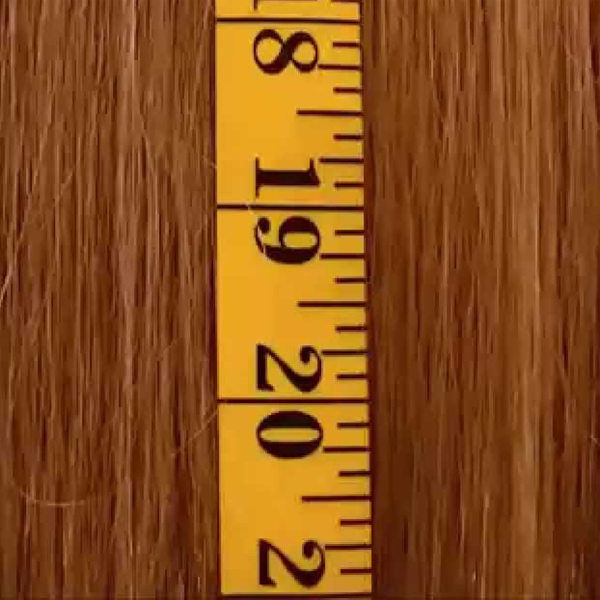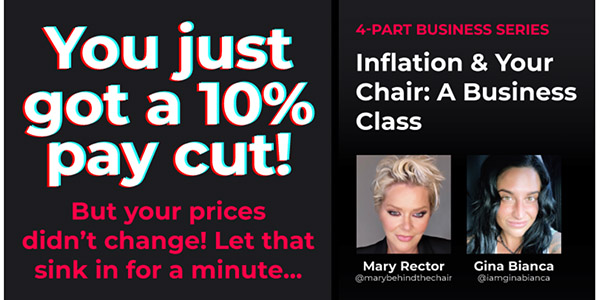What Would You Do: Charging For Extra Hair Color, Part 2
Different Ways To Account For Extra Hair Color Used In The Salon
BTC recently posted a question from a stylist about how to charge for extra tubes of color on clients with very thick or long hair. You all gave some great advice (read it all here!), and it sparked another question—is it feasible to keep track of how many tubes every stylist is using? And how should a salon owner handle this situation?
“This is about your recent post in regards to charging for extra tubes of color and how some salons charge a flat percentage fee. It seems most people were saying ‘charge for every extra tube.’ But as a salon owner with 22 staff members and countless colors being performed all day long…how would I even manage that? If I was expecting to charge all my stylists for every single tube, how would they/could they pass that cost on to clients? I’m thinking clients would not go for that? And what about ‘mistakes’ or even being creative or trying new looks? How would the salon keep track of all those tubes? PLEASE HELP! I’m somewhat new as a salon owner!”
Need some advice? DM us on Instagram and Facebook!
How Other Salons Handle It
“My salon has stylists write down their chair number on every tube box they open. All tube boxes are then collected at end of each day. Personally, I would have the stylist charge per bowl. That way, it makes up [what they are getting charged] per tube.” – @daintyjest
“My salon has cameras in the color room in case someone isn’t being truthful or seen wasting color (as well as all over the salon), but we are also based on an honor system. You get a small percentage taken from your check for color. And we also expect the stylists to charge accordingly for what they use. Single process, double process, glaze, the amount of lightener you use…this should all be ticketed into the pricing. If someone uses three tubes of color on their client, they should be charging the client for that amount.” – @ahleckk
“In my area, there is such a grey area on commission and booth rental situations like this. The safest legal way of booth rental is that the stylist supplies ALL their own product and supplies, the salon owner provides necessities such as back bar/towels/cleaning products. With commission, a salon owner (again, in my area) cannot charge for a tube of color off the top of the services cost. For example, if a color is $40 and you’re a 50/50 commission, stylist MUST get the $20. You cannot start with $40, then the salon owner deducts $8 for color, and the stylist gets $16. That’s the point of commission, all products provided.” – @tangled_up_in_blew
“Clients should pay, not stylists. Stylists should only pay for color if they’re a booth renter, i.e. an independent contractor. The price for color should be a standard base of two tubes, plus the cost of service. If it takes more than two tubes, charge individually for each, plus the cost of service…and yes, charge for half tubes.” – @celebrity_hair_ninja
“Charge for extra length, make everyone fill out a consultation card and put data in the system to make sure that their productivity matches their time. If they are making less than what they should be, it either means they are undercharging or too slow. You need to know the numbers, and you will know who’s not charging for extra length and thickness. The seasoned stylist should be pulling in $40 to $50 an hour, minimum, before commission. And it should be a minimum of 45/55 split if you are pricing correctly.” – @danagarmon
“If you are charging staff a ‘backbar’ or a ‘color fee,’ is it based as a percentage of the total color service, or is it a flat rate per service? If it’s a percentage, then any upcharge that you charge the client, you would get your money back from that. If you charge a flat fee per service, then you need to also add a fee onto any additional color that would be used by your staff, so you recover some of the costs. I would still be charging the client more for the extra color either way. Three ounces total (color plus developer) is an average amount. If you are using more, then you charge more. That charge should be based on what you are using. The client then pays more for it.” – @brenda_m_hair
“I will admit I never really cared about how much I mixed when I was just a stylist 🙈 . Now that I own a salon, I have to say I cautiously mix the proper amount, and in my salon we have a formula for how much to charge the client per extra mix necessary. Unfortunately, it’s hard to police everyone in the salon as to how much they are mixing, but I try get my staff to understand that if they are mixing more, chances are it’s because the client has a lot of hair which usually means more time spent on them, which would mean the stylist should deserve more money for the time spent on them. Why should the owner have to eat the cost of waste or extra mixes? I know I didn’t understand when I was working for someone as how expensive color cost is in a salon. But educating the staff on how much to use has been helpful to me. If a salon owner isn’t taking a product charge I can’t even imagine how they can stay in business. Charge the clients. It’s just more money in your pocket anyway. And you won’t piss your boss or manager off 😉. Win win, lol.” – @handstandinghairstylist
Examples of Pricing
“We ring clients through as ‘color 1 ounce,’ ‘color 2 ounce,’ ‘color 3 ounce,’ etc. So ‘color 1 ounce’ is the cheapest, then they take a specific percentage off the service to pay for the color. For example, if we are on commission, the $8 to $10 is taken off the final price to pay for color instead of being paid towards our commission.” – @hailey.brick
“I price by amount of color used. I consider 40 grams for an average ‘root touch’ and anything past that I add an additional $10 to $15. You have to figure out how to offset the ‘waste.’ If a stylist doesn’t own the salon or pay for product, they tend to not care about waste. I booth rent now, but when I was commission, our owner charged us a $5 chemical charge per client as well as $1 for backbar as products. The $5 for chemicals covered 40 grams and then the stylist is responsible for adding the upcharge for additional color.” – @pope_amanda
“My base price is for 4 ounces of color (developer plus color). Any extra bowls (2 ounces of color, 1 ounce of color plus 1 ounce of developer) above that is $10. I let the guest know ahead of time that there is extra charge—they are okay with it and understand. I only mix 2 ounces a time after the initial 4 ounces. This also reduces color waste.” – @hair_by_jessica_cruz









